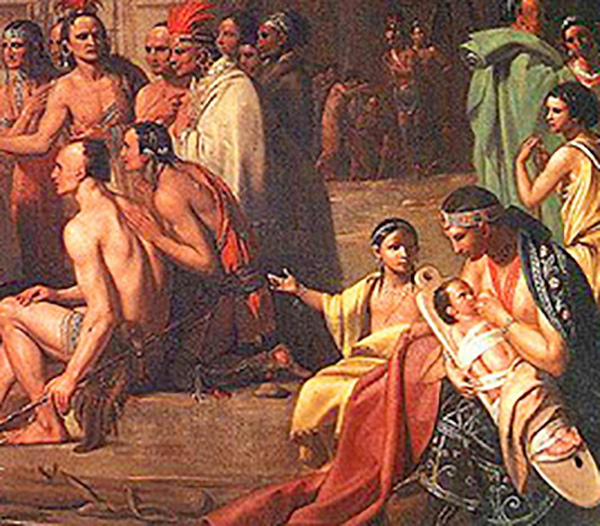Submitted by Green Brook Historical Society
Once upon a time the Green Brook Township area was not inhabited by strip malls, crazy drivers on Route 22 and housing developments. Nor were there the settlers and Quaker families that proceeded us around the time of the Revolutionary War. The land was occupied by tribes and camps of Indians. During the early part of the 1600’s, the Indians were the owners of this territory. They were especially drawn here by the availability of water from springs and the Green Brook, the plains suitable for growing their crops and the mountains for hunting. Also in consideration were the gaps in the First Watchung which allowed for trails to get to other regions.
In 1681 the English settlers bought the large tract of land from Bound Brook to North Plainfield including the water, as well as the land to the mountains, from two chieftains of the Raritan Indians tribe which occupied the lands. The purchase price was not disclosed. Now as a total aside, we would like to correct an unrelated myth. It is assumed that the Dutch bought the whole island of Manhattan for $ 24 from the Indians. A true steal would it be true. Apparently true is that the Dutch paid that sum for possession of Manhattan. Unfortunately that tribe was not the tribe that had the control or ownership of the island. So the ownership tribe couldn’t understand why these white men were squatting on their territory. Therefore they periodically launched attacks to drive them out. In turn, the Dutch were confused by the attacks on lands they thought they had purchased.
But back to this area. Broken pottery, stone implements, arrowheads and other relics were found in the vicinity of Sebrings Mills suggesting an Indian encampment in that location.
There were two large encampments near Grant and Clinton Avenues in Plainfield. Relics found all along the Green Brook are evidence of natives’ presence in our area. The settlers in this area found the Raritan Indians trustworthy, friendly and peaceful which made them compatible with the Quaker way of life. In the late 1700’s, the Indians gradually saw their lands taken away and so they peacefully left and moved to Western Pennsylvania. Another chapter in our history was over.
The Green Brook Cultural Heritage and Historic Preservation Committee and The Green Brook Historical Society meet the third Thursday of each month at 7:30 p.m. at Green Brook Town Hall located at 111 Greenbrook Rd., Green Brook, NJ. We are always looking for people interested in history and culture to join our group, as a guest or a member. For more information about the Green Brook Historical Society, visit www.gbhsnj.org.

Photo by IndiansofcentralNJ.com.19





